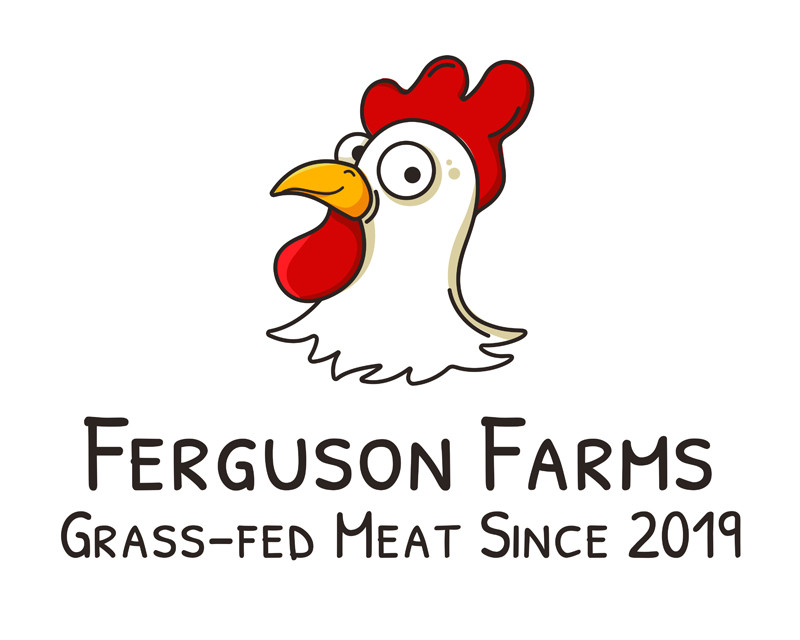Grass-Fed vs. Grain-Fed Beef: Understanding the Key Differences
posted on
October 1, 2024
Grass-Fed vs. Grain-Fed Beef | Ferguson Farms
Grass-Fed vs. Grain-Fed Beef: Understanding the Key Differences

The debate between grass-fed and grain-fed beef ultimately comes down to the diet and lifestyle of the cattle. While both types of beef are widely available, the differences in how the animals are raised have a significant impact on the quality of the meat, its nutritional profile, and its environmental footprint. At Ferguson Farms, we are committed to providing grass-fed beef that not only tastes better but also contributes to a more sustainable and ethical farming system.
In this post, we'll break down the differences between grass-fed and grain-fed beef and explore why grass-fed beef offers more benefits for your health, the environment, and animal welfare.
1. Grass-Fed Beef: Raised the Natural Way
Grass-fed beef comes from cattle that graze on pasture throughout their lives. This natural diet of grasses and forages is what cattle are biologically designed to eat. In contrast to grain-fed beef, which involves feeding the animals corn, soy, and other grains, grass-fed cattle live in a way that mirrors their natural behavior and dietary preferences.
Nutritional Benefits of Grass-Fed Beef
The benefits of grass-fed beef extend well beyond the taste. Because grass-fed cattle consume a more natural diet, their meat is higher in essential nutrients. Here’s how grass-fed beef stands out nutritionally:
- Higher Omega-3 Fatty Acids: Grass-fed beef contains up to five times more omega-3 fatty acids than grain-fed beef. Omega-3s are essential for heart health and reducing inflammation in the body.
- Higher CLA (Conjugated Linoleic Acid): CLA is a type of fat found in higher concentrations in grass-fed beef. It has been shown to have cancer-fighting properties and may help reduce body fat.
- Rich in Antioxidants: Grass-fed beef is a great source of antioxidants like vitamin E and beta-carotene, which help protect cells from oxidative damage.
By consuming grass-fed beef, you're choosing a product that is not only more flavorful but also packed with nutrients that can contribute to better health. For more details on the nutritional benefits, explore our Guide to Grass-Fed Beef.
2. Grain-Fed Beef: The Conventional Approach
In contrast to grass-fed cattle, grain-fed beef comes from cattle that are typically raised in CAFOs (Concentrated Animal Feeding Operations), where they are fed a diet consisting primarily of grains like corn and soy. Grain-fed cattle are often confined to feedlots during the finishing stage, where the goal is to fatten them up quickly to increase marbling and produce more tender cuts of beef.
Nutritional Differences in Grain-Fed Beef
While grain-fed beef is generally more marbled, meaning it contains more intramuscular fat, this comes with some trade-offs. Grain-fed beef tends to have higher levels of unhealthy omega-6 fatty acids, which can promote inflammation when consumed in excess. In addition, the meat is lower in beneficial nutrients like omega-3s and CLA compared to grass-fed beef.
- Higher in Omega-6 Fatty Acids: Grain-fed beef has higher levels of omega-6s, which can lead to an imbalance in the body’s fatty acid ratio, potentially contributing to chronic diseases.
- Lower in Omega-3s and Antioxidants: Grain-fed cattle lack access to the nutrient-rich grasses that provide these essential nutrients, making the meat less beneficial for health.
For a deeper look at how grain-fed beef compares nutritionally to grass-fed beef, read our detailed post on Grass-Fed vs. Corn-Fed Beef.
3. Environmental Impact: Grass-Fed vs. Grain-Fed
The environmental impact of how beef is produced is another key difference between grass-fed and grain-fed systems. CAFOs and grain-fed operations contribute significantly to environmental degradation, whereas grass-fed systems can actually improve the environment when managed properly.
The Environmental Costs of Grain-Fed Beef
Grain-fed beef production, especially in CAFOs, has been linked to a number of environmental problems:
- High Water and Resource Usage: Growing grains like corn and soy requires vast amounts of water, land, and fossil fuels. This contributes to deforestation, soil erosion, and the depletion of natural resources.
- Greenhouse Gas Emissions: CAFOs are responsible for high levels of methane and other greenhouse gases that contribute to climate change. The confinement of large numbers of animals in one place also results in pollution from manure, which can contaminate water sources.
- Overuse of Antibiotics: Due to the crowded conditions and grain-based diets, cattle in CAFOs are often given antibiotics to prevent disease, contributing to the growing problem of antibiotic resistance.
Grass-Fed Beef and Sustainability
Grass-fed systems, on the other hand, offer a more sustainable alternative. At Ferguson Farms, we use rotational grazing, a technique that allows cattle to graze on different sections of pasture in cycles. This method helps regenerate the soil, promotes biodiversity, and sequesters carbon in the land, reducing the overall carbon footprint of beef production.
- Carbon Sequestration: Grass-fed cattle, when managed properly, can actually help capture and store carbon in the soil, mitigating the effects of climate change.
- Biodiversity: Pasture-based systems support a wide variety of plant and animal species, which helps maintain a balanced and healthy ecosystem.
- Water Efficiency: Grazing cattle on pasture requires significantly less water than growing grains for feed, making grass-fed systems more efficient in terms of water usage.
For more information on the environmental benefits of grass-fed beef, check out our post on Sustainable Farming Practices.
4. Animal Welfare: Why Grass-Fed is More Ethical
Another important aspect of the grass-fed vs. grain-fed debate is the animal welfare component. In CAFOs, cattle are often confined to small spaces, fed an unnatural diet, and subject to stressful living conditions. These practices can lead to poor health outcomes for the animals and increase the likelihood of disease.
In contrast, grass-fed cattle are allowed to live in a more natural environment. At Ferguson Farms, our cattle graze freely on open pastures, which allows them to exhibit natural behaviors and maintain their health without the need for antibiotics or hormones.
- Natural Diet: Grass-fed cattle eat what they are naturally adapted to—grass. This diet promotes better health for the animals, reducing the need for medication.
- Stress-Free Living: Pasture-raised cattle are less stressed, which results in healthier, more flavorful meat.
If animal welfare is important to you, choosing grass-fed beef is a way to ensure the meat you consume comes from animals that were raised humanely.
For more on how pasture-raised systems support animal welfare, read our post on What Does Pasture-Raised Mean.
5. The Flavor Difference: Grass-Fed vs. Grain-Fed Beef

Beyond the nutritional and environmental aspects, another major factor that sets grass-fed beef apart from grain-fed beef is the flavor. Grass-fed beef has a richer, more complex flavor, often described as earthy or robust, thanks to the cattle's natural diet of grasses and forages. The leaner texture of grass-fed beef may require different cooking techniques, but the flavor payoff is well worth it.
In contrast, grain-fed beef tends to have a milder, more buttery flavor due to its higher fat content. While some consumers prefer this marbling, it comes at the cost of reduced nutritional value and environmental impact.
For tips on how to cook grass-fed beef to perfection, visit our recipe page or check out our Guide to Grass-Fed Beef.
Conclusion: Why Grass-Fed Beef is the Better Choice
When comparing grass-fed vs. grain-fed beef, the choice becomes clear. Grass-fed beef offers superior nutritional benefits, supports sustainable farming practices, promotes better animal welfare, and delivers a richer flavor profile. While grain-fed beef is more commonly available and may have more marbling, the long-term benefits of grass-fed beef for your health and the environment far outweigh the differences.
At Ferguson Farms, we are proud to provide 100% grass-fed, pasture-raised beef that aligns with our commitment to sustainability, animal welfare, and delivering high-quality, nutrient-dense meat. Make the switch to grass-fed beef today and taste the difference for yourself.
For more on this topic, check out our posts on Grass-Fed vs. Corn-Fed Beef and Sustainable Farming Practices.




